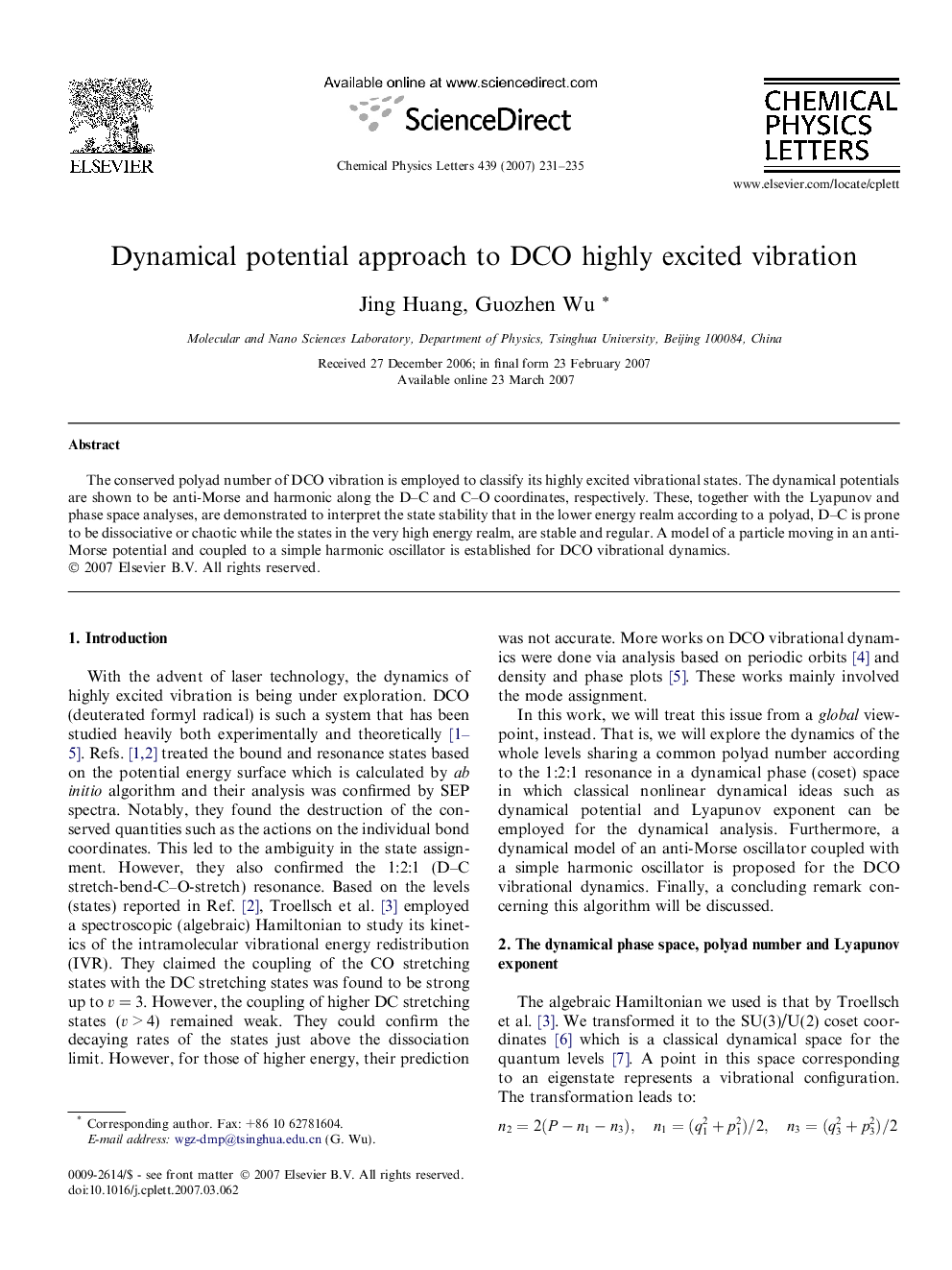| Article ID | Journal | Published Year | Pages | File Type |
|---|---|---|---|---|
| 5389134 | Chemical Physics Letters | 2007 | 5 Pages |
The conserved polyad number of DCO vibration is employed to classify its highly excited vibrational states. The dynamical potentials are shown to be anti-Morse and harmonic along the D-C and C-O coordinates, respectively. These, together with the Lyapunov and phase space analyses, are demonstrated to interpret the state stability that in the lower energy realm according to a polyad, D-C is prone to be dissociative or chaotic while the states in the very high energy realm, are stable and regular. A model of a particle moving in an anti-Morse potential and coupled to a simple harmonic oscillator is established for DCO vibrational dynamics.
Graphical abstractThe 28 levels with PÂ =Â 6 (a), the percentages of nondissociation cases for these levels (b), the dynamical potential corresponding to the bending coordinate (c) and the average Lyapunov exponents for the levels (d) are shown.Download full-size image
